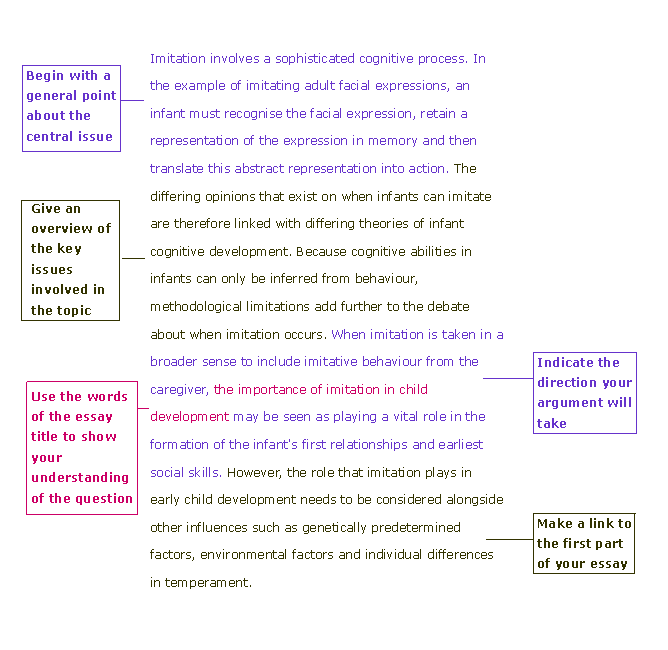
A lot of you are studying for TOFEL, IELTS or TOEIC or you would like to write well in English. I am going to talk on how to write introductory paragraph with example in the article below. In fact, the introduction of an essay is the most important part of the essay. A good introduction makes writing an essay easy and reading it fun if you do a good intro your whole essay would be easier to write. Moreover, a good introduction helps you by giving the details to the readers so they know if they want to read the whole essay or not. A good intro also gives you the order of your argument and the process of writing your whole essay.
How to Write Introductory Paragraph With Example
Before beginning writing your essay it’s important to have an essay outline in place, this will help you write a perfect essay. An essay plan is the essay structure and is divided into three parts: Introduction, Body of the essay and conclusion. Now I am going to elaborate on the introduction of an essay an strucuture of an essay introduction.
Structure of an Essay Introduction
1. Introduction of an Essay Must be Grabber
The introduction of an essay must be a grabber. When the reader read the intro of your essay, it must grab or catch the intention of the reader. Also, a good intro makes the attention of the reader to go deeper into your essay. You can start your essay with
A. Joke
Sometimes starting your intro with a joke can grab the attention of the readers. If the joke is interesting the readers might go dipper to read your whole essay.
B. Proverb/Quote
You can start your intro by any good proverb/quote from famous personalities. It can give a good advice to the people about life and they might get interest to read more in your essay.
C. Anecdote
Most of the people like to read anecdote. You can write about your own life story. Shortly write an interesting anecdote in your intro and grab the intention of the readers to read dipper.
D. Suprising Fact
You can write a suprising fact related to your essay topic in the intro. Write any fact that your reader may not have known and completely surprises them.
E. Curiosity
Start your intro by writing an open ended question. Like how to make 1 million dollar in a week? The reader will tend to read more to know the answer of this question in your essay.
This is your grabber. This is how you can get the attention of the reader to read more in your essay. Now if you have a good grabber all want to read your whole essay if not they will neglect it.
2. Topic/Subject
When you grab the attention of your reader with first few sentences of your essay introduction. Secondly, you introduce the topic with the main ideas regarding the topic. Even you can rewrite here the main topic or subject of the essay.
3. The Thesis
The thesis comes in the last of the intro but sometimes it’s first. Here simply we flip the question asked in the topic into the statement and express either we agree or disagree on the topic. Or the thesis statement is:
- Is usually a single sentence near the beginning of your paper (most often, at the end of the first paragraph) that presents your argument to the reader. The rest of the paper, the body of the essay, gathers and organizes evidence that will persuade the reader of the logic of your interpretation.
- It tells the reader how you will interpret the significance of the subject matter under discussion.
- Is a road map for the paper; in other words, it tells the reader what to expect from the rest of the paper.
- Directly answers the question asked of you. A thesis is an interpretation of a question or subject, not the subject itself. The subject, or topic, of an essay might be World War II or Moby Dick; a thesis must then offer a way to understand the war or the novel.
Example

Please don’t forget to write your feedback and ask your questions using the comment section below.
